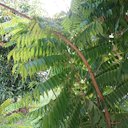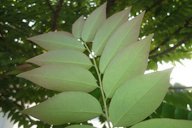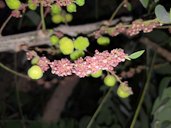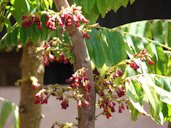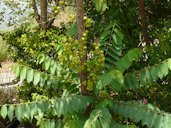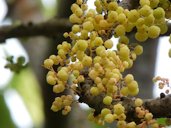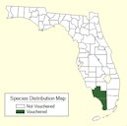| Otaheite Gooseberry - Phyllanthus acidus | |||||||||||||||||||||
|---|---|---|---|---|---|---|---|---|---|---|---|---|---|---|---|---|---|---|---|---|---|
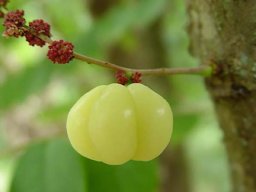 Fig. 1  Phyllanthus acidus, Marquesas Islands, French Polynesia 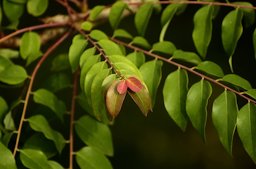 Fig. 2  P. acidus new growth 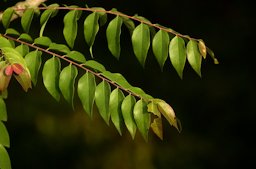 Fig. 3  P. acidus leaf habit 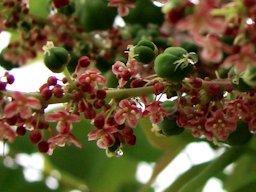 Fig. 8  Male and female flowers - the females are on the green immature fruits, Brisbane, Australia 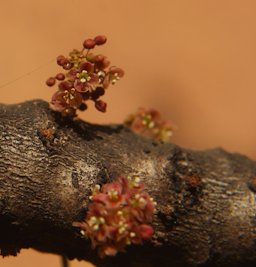 Fig. 9  Garden, Magalegoda, Veyangoda, Sri Lanka 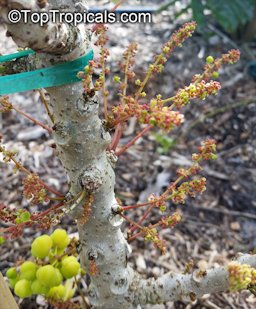 Fig. 10  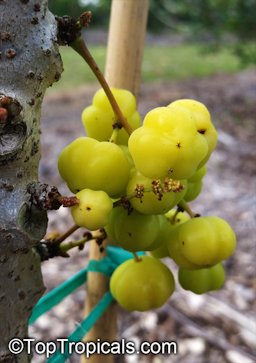 Fig. 13  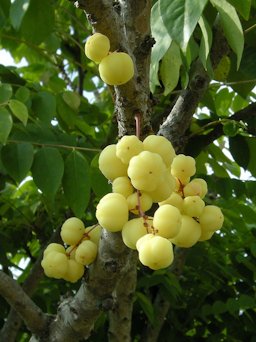 Fig. 14  P. acidus, Chaiyaphum, Thailand 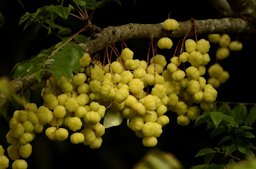 Fig. 18  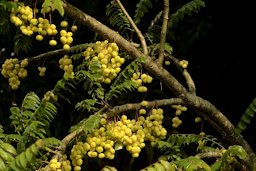 Fig. 19  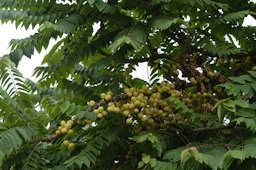 Fig. 20  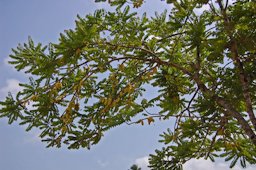 Fig. 21  P. acidus tree, fruiting habit, near Borobudur, Central Java, Indonesia 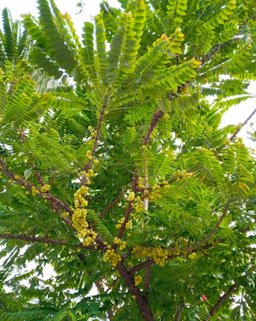 Fig. 22  Tree fruiting habit, Kuala Lumpur, Malaysia 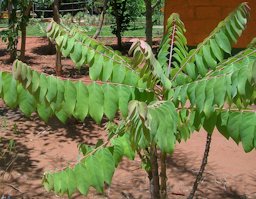 Fig. 23  P. acidus seedling, Karnataka, India 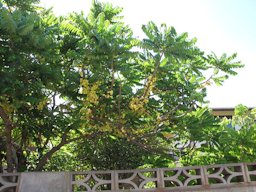 Fig. 24  P. acidus (Otaheite gooseberry) fruiting habit Napili, Maui, Hawai'i 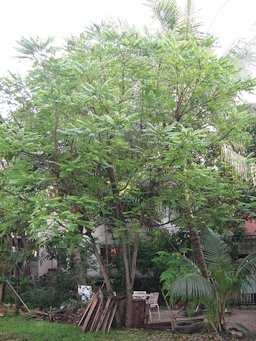 Fig. 25  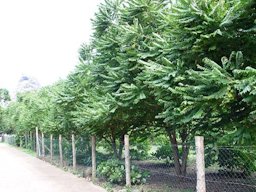 Fig. 26  P. acidus, Marquesas Islands, French Polynesia 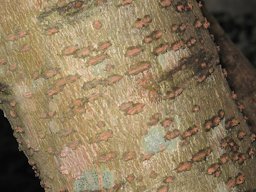 Fig. 27 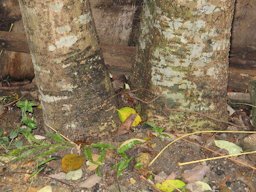 Fig. 28 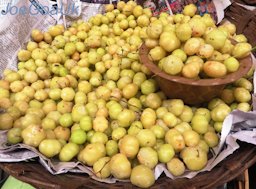 Fig. 29  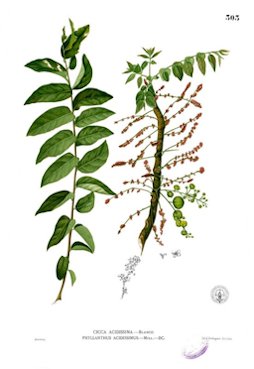 Fig. 30  Averrhoa acida L. |
Scientific
name Phyllanthus acidus (L.) Skeels Common names English: Otaheite gooseberry, star gooseberry, Malaya gooseberry; Belize, Yucatan: wild plum; Brazil: groselha; Costa Rica, Cuba, Guatemala, Nicaragua: grosella; El Salvador: pimienta or guinda; French: grosella, cerisier de Tahiti, cherimbelier, phyllanthe sour, surelle, surette de la Martinique; French West Indies: groseillier des Antilles; India: star gooseberry, West India gooseberry, jimbling, chalmeri, harpharori; Indonesia: ceremai and cerema; Jamaica: cheramina, jimbling, short jimbelin; Java: cherme, tjerme, tjareme; Laos: mak-nhom; Malaysia: cerme and chermai, Malay gooseberry, country gooseberry, cheremai, chermela, chamin-chamin, or kemangor; Mexico: ciruela corteña, manzana estrella; Philippines: iba; Puerto Rico: cereza amarilla, cerezo comun, cerezo de la tierra; Tagalog: iba; Ilokano: karmay; Cambodia: kantuet; Thailand: mayom; Venezuela: cerezo agrio; Vietnam: chum ruot, cherimbillier, tam duot 1,12,13 Synonyms Averrhoa acida Linnaeus, Cicca acida Linnaeus, C. acidissima Blanco, C. disticha (Linnaeus) Merrill, C. nodiflora Lam., C. racemosa Lour., Diasperus acidissimus (Blanco) Kuntze, P. acidissimus Müll.Arg., P. cicca Müll., P. cochinchinensis (Lour.) Müll.Arg., P. distichus (L.) Müll.Arg., P. longifolius Jacq., Tricarium cochinchinense Lour. 1,3,4 Relatives Bignay (Antidesma bunius), Herbert river cherry (A. dallachyanum), tassle berry (A. venosum), Indian gooseberry (Emblica officinalis, P. emblica) 11,12 Family Euphorbiaceae (spurge family) Origin Brazil, Colombia 7 USDA hardiness zones 10-12 2 Uses Fruit; ornamental; medicinal properties 6 Height Up to 33 ft (10 m) 2,5 Spread 75 ft (22.5 m) 2 Crown Open; sparingly branched; spreading crown 10 Growth rate Moderate 2 Trunk/bark/branches Bark rough; grey; prominent lenticels 5 Leaves Simple; bright green; to 2.7 in. (7 cm); ovate; held in 2 rows along a 12 in. (30 cm) axis 2 Flowers Minute; pale, reddish or pink; in clusters along a slender axis; Feb.-Apr. 2,5 Fruit Berry; cauliflorous; densely clustered along the trunk and limbs or dangling from younger twigs; very sour 2 Season May, June, July 5 Light requirement Full sun 2 Soil tolerances Tolerates a variety of soils including very sandy soils 5 Drought tolerance Prefers growing in a moist site, though established plants are drought tolerant 2,9 Plant spacing Grown at a spacing of 26.3 x 26.3 ft (8 x 8 m) in Indonesia 5 Invasive potential * None reported Pest resistance Suseptible to phyllanthus caterpiller in Florida Known hazard Juice of the root bark is weakly poisonous 5 Reading Material Otaheite Gooseberry, Fruits of Warm Climates Phyllanthus acidus, Agroforestree Database Origin Phyllanthus acidus is a pantropic species, probably native to the coastal region of north-eastern Brazil, and has been frequently wrongly ascribed to Madagascar, India or Polynesia. It is now naturalized and cultivated pan-tropically in India, Thailand, Myanmar, Indonesia, South Vietnam, Laos, Peninsular Malaysia, Polynesia and all the larger islands of the West Indies. 13 The Otaheite gooseberry, Phyllanthus acidus (L.) Skeel (Euphorbiaceae), has been spread to the Caribbean, Central and South America. 12 Description Phyllanthus acidus is a small, deciduous tree with greenish grey bark, and a light airy, spreading habit. In full harvest, the canopy of P. acidus appears illuminated within by its masses of translucent fruit. 2 The Otaheite gooseberry is subtropical to tropical, being sufficiently hardy to survive and fruit in Tampa, Florida, where cold spells are more severe than in the southeastern part of the state. It thrives up to an elevation of 3,000 ft (914 m) in El Salvador. Formerly an escape from cultivation in South Florida, there are now only scattered specimens remaining here as curiosities. In general, the Otaheite gooseberry tree very much looks like the bilimbi tree. 1 Comparison of Similar Looking Plants, Flora & Fauna Web, National Parks Board ext link Leaves/branchlets At the branch tips are clusters of deciduous, greenish or pinkish branchlets 6 to 12 in (15-30 cm) long, bearing alternate, short-petioled, ovate or ovate-lanceolate, pointed leaves 3/4 to 3 in (2-7.5 cm) long, thin, green and smooth on the upper surface, blue-green with a bloom on the underside; altogether giving the impression of pinnate leaves with numerous leaflets. There are 2 tiny, pointed stipules at the base of each leaf. 1
Fig. 5. Tahitian gooseberry branching habit, Nakhon Pathom, Thailand Flowers Small, male, female, and some hermaphrodite, 4-parted, rosy flowers, are borne together in little clusters arranged in panicles 2 to 5 in (5-12.5 cm) long, hanging directly at the nodes of leafless branchlets on older wood, and usually also on proximal branchlets of current year's growth and the upper trunk. 1,8 The tree flowers between February-April in Florida. 5
Fig. 11. Tahitian gooseberry tree, P. acidus, Hyderabad, Telangana, India Fig. 12. P. acidus (Otaheite gooseberry), flowers and leaves, Lanai City, Lanai, Hawai'i Fruit The fruit is oblate with 6 to 8 ribs; is 3/8 to 1 in (1-2.5 cm) wide; pale-yellow to nearly white when fully ripe; waxy, fleshy, crisp, juicy and highly acid. Tightly embedded in the center is a hard, ribbed stone containing 4 to 6 seeds. 1 The plant can flower and produce some fruit through much of the year, although there are generally two periods a year when fruit is produced plentifully. 10 Fruits mature in 90-100 days. P. acidus trees start producing a substantial crop at the age of 4 years. 5
Fig. 15. Unripe fruit Fig. 16. Fruiting habit, Thane, India Fig. 17. Tahitian gooseberry tree, P. acidus, Singapore Pollination Bees pollinate the flowers morning and evening. 2 Propagation The tree is generally grown from seed but may also be multiplied by budding, greenwood cuttings, or air-layers. Seedlings will produce a substantial crop in 4 years. 1 The fruits often explosively dehisce dispersing their seeds. 7 Climate Otaheite gooseberry grows well in the tropics at low and medium altitudes in places with a short or prolonged dry season. The tree prefers hot, humid tropical lowlands. In north-eastern Brazil, the tree has been found in coastal forest and in Southeast Asia it is cultivated on humid sites, up to 1 000 m altitude. 7 It tolerates a wide range of soils including very sandy soils. It quite cold hardy surviving the cold winter in Tampa, Florida. 13 Pests The Otaheite gooseberry is prone to attack by the phyllanthus caterpiller in Florida. This pest eats the bark and also the young leaves, causing total defoliation in a few days if not controlled by pesticides. 1 Food Uses The fruit may be eaten raw by those who appreciate their astringency, of made into preserves, confectionery, pickles of chutneys. P. acidus fruit are popular in SE Asia as a refreshing drink, for chutneys of as a substitute for tamarind in curries. 2 The mature sour fruits may be eaten fresh but usually they are sprinkled with salt to neutralize the acidity. Used in cooking to flavor dishes, the fruits are excellent raw materials for processing into pickle and sweetened dried fruits; fruit juice is used in cold drinks and fruit to make vinegar. In Malaysia, ripe and unripe fruit are served as a relish, syrup or sweet preserve. The fruits, combined with other fruits are used in chutney or jam, because of their setting properties. Young leaves are cooked as a vegetable in Indonesia, Thailand and India. 7 In Indonesia, the sour fruits are used as a condiment in cooking to flavour dishes and served as a substitute for assam and used as an ingredient in sambal and sayur or used in rojak mixture. Pickled fruits are available in bottles in local markets. 13 Nutrient Content The nutritive values of Otaheite gooseberry fruit (per 100 g edible portion) are 28 k cal of energy, 91.7 g moisture, 0.7 g protein, 6.4 g carbohydrate, 0.6 g crude fi ber, 5 mg calcium, 23 mg phospho- rous, 0.4 mg iron, 0.01 mg thiamin, 0.05 mg ribo fl avin and 8 mg vitamin C (Ministry of Public Health, Thailand 1970). 13 Medicinal Properties ** In India, the fruits are taken as liver tonic, to enrich the blood. The sirup is prescribed as a stomachic; and the seeds are cathartic. The leaves, with added pepper, are poulticed on sciatica, lumbago or rheumatism. A decoction of the leaves is given as a sudorific. Because of the mucilaginous nature of the leaves, they are taken as a demulcent in cases of gonorrhea. 1 The root is drastically purgative and regarded as toxic in Malaya but is boiled and the steam inhaled to relieve coughs and headache. The root infusion is taken in very small doses to alleviate asthma. Externally, the root is used to treat psoriasis of the soles of feet. The juice of the root bark, which contains saponin, gallic acid, tannin and a crystalline substance which may be lupeol, has been employed in criminal poisoning. The acrid latex of various parts of the tree is emetic and purgative. 1 Other Uses Timber: The wood is is light-brown, fine-grained, attractive, fairly hard, strong, tough and durable if seasoned, , but scarce, as the tree is seldom cut down. It is used for utensils and other small objects. 1,5 Tannin or dyestuff: The bark is used in India as a tanning agent. 1,5 Poison: Extract from the plant has shown nematicidal activity against the pine wood nematode, Bursaphelenchus xylophilus. 5 The juice of the root bark is weakly poisonous. 5 General From the Greek phyllon, leaf, and anthos flower, in allusion to the flowers of some species being apparently borne on the edge of the leaves. 6
Fig. 31. Tahitian gooseberry tree distribution map, wild populations Further Reading Phyllanthus acidus, PROSEA Foundation List of Growers and Vendors |
||||||||||||||||||||
| Bibliography 1 Fruits of Warm Climates. Miami, Julia F. Morton, 1987. 2 Barwick, Margaret. Tropical & Subtropical Trees. A Worldwide Encyclopaedic Guide. London, 2004. 3 Wunderlin, R. P., et al. "Phyllanthus acidus (L.) Skeels." Atlas of Florida Plants, Institute for Systematic Botany, University of South Florida, Tampa, S. M. Landry and K. N. Campbell (application development), USF Water Institute, 2022, Atlas of Florida Plants, florida.plantatlas.usf.edu/plant.aspx?ID=416. Accessed 10 Jan. 2022. 4 Kruse, J. "Phyllanthus acidus (L.) Skeels." Mansfeld's World Database of Agricultural and Horticultural Crops, mansfeld.ipk-gatersleben.de/apex/f?p=185:46:9767981363440::NO::module,mf_use,source,akzanz,rehm,akzname,taxid:mf,,botnam,0,,Phyllanthus%20acidus, 1952. Accessed 10 Jan. 2022. 5 "Phyllanthus acidus (L.) Skeels." ICRAF Database, Tree Species, db.worldagroforestry.org//species/properties/Phyllanthus_acidus. Accessed 10 Jan. 2022. 6 The New Royal Horticulture Society Dictionary of Gardening. Vol. 3, L to Q, Edited by Anthony Huxley, et al, London, MacMillan Reference, 1999. 7 Orwa, C., et al. "Phyllanthus acidus L." Agroforestree Database: a tree reference and selection guide, version 4.0., 2009, Agroforestry, apps.worldagroforestry.org/treedb2/speciesprofile.php?Spid=18020. Accessed 11 Jan. 2022. 8 van Holthoon, F. L. "Phyllanthus acidus (L.) Skeels." Medicinal and poisonous plants No. 1, Plant Resources of South-East Asia No 12(1), Edited by L. S. de Padua, et al, PROSEA Foundation, Bogor, Indonesia, record 361, 1999, PROSEA, (CC BY-NC-SA 3.0), www.prota4u.org/prosea/view.aspx?id=361. Accessed 12 Jan. 2022. 9 Subhadrabandhu, Suranant. "Under-Utilized Tropical Fruits of Thailand." Food And Agriculture Organization Of The United Nations, Regional Office For Asia And The Pacific Bangkok, Thailand, RAP Pub. 2001/26, Dec. 2001, FAO, www.fao.org/3/ab777e/ab777e00.htm#Contents. Accessed 12 Jan. 2022. 10 Little, Elbert L., et al. "Common trees of Puerto Rico and the Virgin Islands." Series: Agriculture Handbook no. 449, Second Volume, U.S. Dept. of Agriculture, Sept. 1974, Public Domain, Internet Archive, archive.org/details/treesofpuertoric02litt. Accessed 12 Jan. 2022. 11 "Otaheite Gooseberry, Phyllanthus acidus." Trade Winds Fruit, www.tradewindsfruit.com/content/otaheite-gooseberry.htm. Accessed 12 Jan. 2022. 12 The Encyclopedia of Fruit & Nuts. Edited by Jules Janick and Robert E. Paull, Cambridge, CABI, 2008. 13 Lim, T. K. "Edible medicinal and non-medicinal plants, Fruits, vol. 4." ZLibrary, 2012, b-ok.cc/book/5859961/fc985e. Accessed 13 Jan. 2022. Photographs Fig. 1 Lorence, David H. "Phyllanthus acidus (Euphorbiaceae), Marquesas Islands, French Polynesia." Smithsonian Institution, National Museum of Natural History, Department of Botany, via National Tropical Botanical Garden, 2003, collections.nmnh.si.edu/search/botany/. Accessed 12 Jan. 2022. Fig. 2 PJeganathan. "Phyllanthus acidus." Wikimedia Commons, 14 May 2017, (CC BY-SA 4.0), commons.wikimedia.org/wiki/File:Phyllanthus_acidus_leaves_JEG9371.jpg. Accessed 11 Jan. 2022. Fig. 3 PJeganathan. "Phyllanthus acidus." Wikimedia Commons, 14 May 2017, (CC BY-SA 4.0), commons.wikimedia.org/wiki/File:Phyllanthus_acidus_leaves_JEG9373.jpg. Accessed 11 Jan. 2022. Fig. 4 Yong, Yosri Mohamed. "Phyllanthus acidus." Wikimedia Commons, via ms.wikipedia, 2 Nov. 2007, (CC BY-NC 2.0), (GFDL), commons.wikimedia.org/wiki/File:YosriPokokCermaiDaun.jpg. Accessed 11 Jan. 2022. Fig. 5 Phaengphongsai, Sutthikhun. "Tahitian Gooseberry Tree, Phyllanthus acidus, Nakhon Pathom, Thailand." iNaturalist, Research Grade, 17 Sept. 2020, (CC BY-NC 4.0, )www.inaturalist.org/observations/23614224. Accessed 13 Jan. 2022. Fig. 6 Parvathisri. "சிறிய நெல்லிக்காய் மரம்" Wikimedia Commons, 10 Oct. 2011, (CC BY-NC 3.0), commons.wikimedia.org/wiki/File:Amla_tree-small_amla.jpg. Accessed 11 Jan. 2022. Fig. 7 Kwan. "Phyllanthus acidus (Star Gooseberry)." Nature Love You, natureloveyou.sg/Phyllanthus%20acidus/Main.html. Accessed 13 Jan. 2022. Fig. 8 Gerus, Tatiana. "Phyllanthus acidus." Wikimedia Commons, via Flickr, Uploaded by berichard, 10 Oct. 2008, (CC BY 2.0), Image cropped, commons.wikimedia.org/wiki/File:Phyllanthus_acidus_2.jpg. Accessed 11 Jan. 2022. Fig. 9 Rajatewa, Pradeep."Phyllanthus acidus (L.) Skeels, Garden, Magalegoda, Veyangoda, Sri Lanka." Plants of the World Online, Facilitated by the Royal Botanic Gardens, POWO, (CC BY-NC-SA 3.0), powo.science.kew.org/taxon/urn:lsid:ipni.org:names:194610-2. Accessed 11 Jan. 2022. Fig. 10,13,15 "Phyllanthus acidus, Phyllanthus distichus." Top Tropicals, toptropicals.com/catalog/uid/Phyllanthus_acidus.htm. Accessed 11 Jan. 2022. Fig. 11 samjulian88. "Tahitian Gooseberry Tree, Phyllanthus acidus, Hyderabad, Telangana, India." iNaturalist, Research Grade, 16 Mar, 2019, (CC BY-NC 4.0), www.inaturalist.org/observations/21283585. Accessed 13 Jan. 2022. Fig. 12 Starr, Forest, and Kim. "Phyllanthus acidus (Otaheite gooseberry) Flowers and leaves, Lanai City, Lanai, Hawai'i." Starr Environmental, no. 070403-6431, 3 Apr. 2007, (CC BY 4.0), www.starrenvironmental.com/images/image/?q=24793176211. Accessed 13 Jan. 2022. Fig. 14 Worthington, Len. "Phyllanthus acidus, Chaiyaphum, Thailand." Wikimedia Commons, via Flickr, 10 March 2012, (CC BY-SA 2.0), commons.wikimedia.org/wiki/File:Phyllanthus_acidus_(7046719233).jpg. Accessed 11 Jan. 2022. Fig. 16 Valke, Dinesh. "Phyllanthus acidus, Thane, India.்" Wikimedia Commons, via Flickr, 2 May 2008, (CC BY-SA 2.0), commons.wikimedia.org/wiki/File:Phyllanthus_acidus_(2465023400).jpg. Accessed 11 Jan. 2022. Fig. 17 Hiew, Jonathan. "Tahitian Gooseberry Tree, Phyllanthus acidus, Singapore." iNaturalist, Research Grade, 2 Mar. 2014, (CC BY-NC 4.0, )www.inaturalist.org/observations/548943 Accessed 13 Jan. 2022. Fig. 18 PJeganathan. "Phyllanthus acidus fruit." Wikimedia Commons, 14 May 2017, (CC BY-SA 4.0), commons.wikimedia.org/wiki/File:Phyllanthus_acidus_fruits_JEG9349.jpg. Accessed 11 Jan. 2022. Fig. 19 PJeganathan. "Phyllanthus acidus." Wikimedia Commons, 14 May 2017, (CC BY-SA 4.0), commons.wikimedia.org/wiki/File:Phyllanthus_acidus_fruits_JEG9355_a.jpg. Accessed 11 Jan. 2022. Fig. 20 bloem, Meneerke. "Phyllanthus acidus." Wikimedia Commons, 28 Nov. 2009, (CC BY-SA 3.0), (CC BY-SA 2.5), (CC BY-SA 2.0), (CC BY-SA 1.0), (GFDL), commons.wikimedia.org/wiki/File:Phyllanthus_acidus_leaves_JEG9373.jpg. Accessed 11 Jan. 2022. Fig. 21 Djatmiko, W. A. (Wie146). "Phyllanthus acidus tree, near Borobudur, Central Java, Indonesia." Wikimedia Commons, 8 Oct. 2007, (CC BY-NC 4.0), (CC BY-SA 3.0), (CC BY-SA 2.5), (CC BY-SA 2.0), (CC BY-SA 1.0), (GFDL), commons.wikimedia.org/wiki/File:Phyll_acid_071008-0390_T_brb.jpg. Accessed 12 Jan. 2022. Fig. 22 nisma_gazi. "Tahitian Gooseberry Tree, Phyllanthus acidus, Kuala Lumpur, Malaysia." iNaturalist, Research Grade, 28 Apr. 2019, (CC BY-NC 4.0), www.inaturalist.org/observations/23614224. Accessed 13 Jan. 2022. Fig. 23 Shyamal, L. "Phyllanthus acidus seedling from Karnataka India." Wikimedia Commons, Apr. 2007, (CC BY-SA 3.0), (GFDL), commons.wikimedia.org/wiki/File:PhyllanthusEmblica.jpg. Accessed 11 Jan. 2022. Fig. 24 Starr, Forest, and Kim. "Phyllanthus acidus (Otaheite gooseberry) Fruiting habit Napili, Maui, Hawai'i." Starr Environmental, no. 090714-2682, 14 July 2009, (CC BY 4.0), www.starrenvironmental.com/images/image/?q=24342711013. Accessed 11 Jan. 2022. Fig. 25 Yong, Yosri Mohamed. "Phyllanthus acidus." Wikimedia Commons, via ms.wikipedia, 2 Nov. 2006, (CC BY-NC 2.0), (GFDL), commons.wikimedia.org/wiki/File:YosriPokokCermai.jpg. Accessed 11 Jan. 2022. Fig. 26 Perlman, S. P. "Phyllanthus acidus (Euphorbiaceae), Marquesas Islands, French Polynesia." Smithsonian Institution, National Museum of Natural History, Department of Botany, via National Tropical Botanical Garden, 2004, collections.nmnh.si.edu/search/botany/. Accessed 12 Jan. 2022. Fig. 27 Yong, Yosri Mohamed. "Phyllanthus acidus." Wikimedia Commons, via ms.wikipedia, 2 Nov. 2006, (CC BY-NC 2.0), (GFDL), commons.wikimedia.org/wiki/File:YosriPokokCermaiBatang.jpg. Accessed 11 Jan. 2022. Fig. 28 Yong, Yosri Mohamed. "Phyllanthus acidus." Wikimedia Commons, via ms.wikipedia, 2 Nov. 2006, (CC BY-NC 2.0), (GFDL), commons.wikimedia.org/wiki/File:YosriPokokCermaiBanir.jpg. Accessed 11 Jan. 2022. Fig. 29 Goa, Joegoauk. "Star gooseberry." Flickr, 23 Sept. 3013, (CC BY-SA 2.0), www.flickr.com/photos/joegoauk73/9893165346/in/photolist. Accessed 13 Jan. 2022. Fig. 30 Blanco, Francisco Manuel. "Averrhoa acida L." Flora de Filipinas, ed. 3, 1877-1883, Wikimedia Commons, Public Domain, commons.wikimedia.org/wiki/File:Phyllanthus_acidus_Blanco2.303.png. Accessed 13 Jan. 2022. Fig. 31 Wunderlin, R. P., et al. "Phyllanthus acidus distribution map." Atlas of Florida Plants, Institute for Systematic Botany, University of South Florida, Tampa, S. M. Landry and K. N. Campbell (application development), USF Water Institute, 2022, Atlas of Florida Plants, florida.plantatlas.usf.edu/plant.aspx?ID=416. Accessed 10 Jan. 2022. * UF/IFAS Assessment of Non-native Plants in Florida's Natural Areas ** Information provided is not intended to be used as a guide for treatment of medical conditions. Published 14 Jan. 2022 LR |
|||||||||||||||||||||

